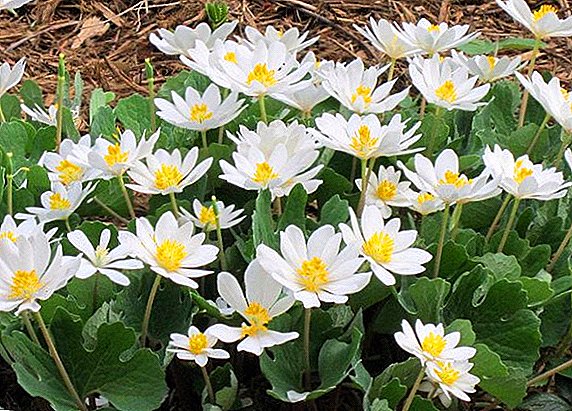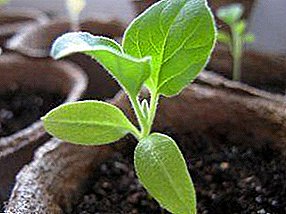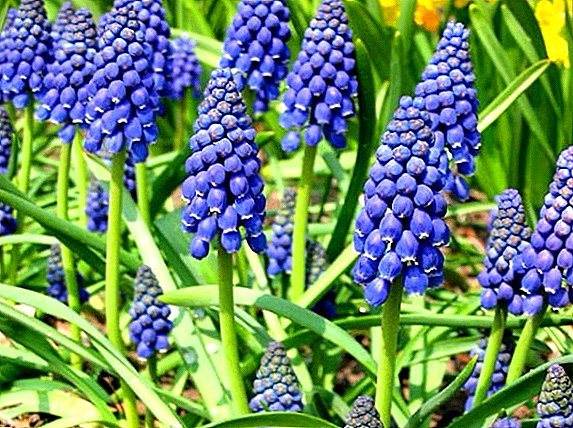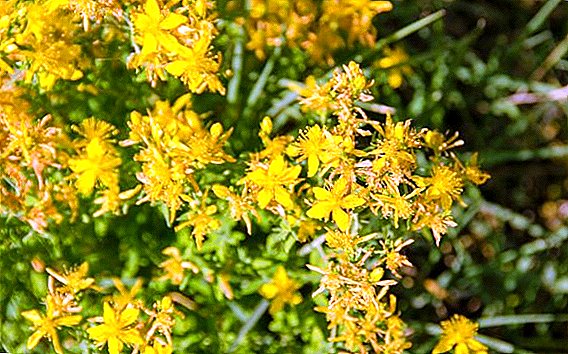
Orchid is a luxurious tropical flower, which is very fond of our lovers of indoor plants. Sooner or later, each of them is faced with the need to transplant this plant, because for normal growth and active flowering of epiphytes, they need a change of substrate and capacity every 2 to 3 years.
Why, then, difficulties arise and plants do not bloom for a long time and wither? The answer to this question can be found in the article, it says quite a bit about the transplant process, and it is also devoted to the issue of providing optimal conditions for the orchid during the recovery period.
What happens to a flower if it is transplanted?
Experts claim that transplanting for orchids is stress. It is quite natural that the plant will be sick for the first time, it is also possible to stop the growth of the root system and leaves. And the task of the grower is to facilitate this period for the flower.
Important: The best time for orchid transplantation is spring, since it is in spring that the roots and leaves of the plant begin to gain strength and grow vigorously.
It is at this time of year that the adaptation period of a flower to a new pot and substrate will pass most safely. But one should not make any manipulations with the orchid during flowering: it can throw off all the flowers and buds. By such measures should be resorted to in extreme cases, when the whole plant is threatened with death.
How to care for plants that have undergone this procedure?
 Orchid in stress requires attention, and more - care and care. But one should not be too zealous: a capricious flower can “not understand” hyper-cares. In order for the flower recovery period to be successful, after transplantation, the plant needs to create an atmosphere of peace, so that it can recover from the stress experienced: the orchid is placed in a shaded room, while not moving from place to place, watered moderately according to a certain scheme.
Orchid in stress requires attention, and more - care and care. But one should not be too zealous: a capricious flower can “not understand” hyper-cares. In order for the flower recovery period to be successful, after transplantation, the plant needs to create an atmosphere of peace, so that it can recover from the stress experienced: the orchid is placed in a shaded room, while not moving from place to place, watered moderately according to a certain scheme.
What problems may arise and why?
In some cases, due to non-compliance with a number of requirements put forward to the process of transplanting and subsequent maintenance of an orchid, some problems may arise: the plant leaves turn yellow and sluggish, there are certain difficulties with the growth of the roots, for a long time it does not please the flowering, all the difficulties listed, the article will go further.
Step-by-step home care instructions
- Orchid after immediately after transplanting should be placed in a room in which the ambient light for 7 - 10 days. In the room it can not be moved from place to place, and you need to choose one permanent position. Experienced florists advise: it is better if the flower is on the east window. Direct sunlight on the leaves of the plant should be avoided; for this, the window can be hung with a translucent matte film.
- Pay attention to the temperature mode: the thermometer thermometer in the room should not rise above the marks + 20С- + 22С.
- The first watering after transplantation should be carried out after 4 - 5 days, the next - no earlier than 14 days. The recommended water temperature is + 35С- + 40С.
This time is necessary for the flower in order to have time to heal the damage that the flower received when moving it to another container. And similar reception will give the chance to lower risk of hit in root system of pathogenic microorganismsthat will definitely cause epiphytic disease.
Watering
There are several ways to water the orchid. Experienced growers advise the first watering after transplantation to produce with the help of the shower, thereby creating something similar to a tropical rain. For this:
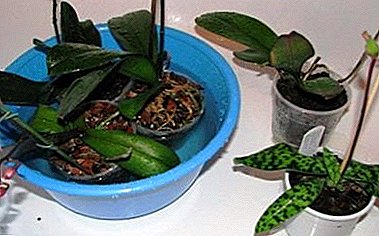 A flower is placed in a bath and a stream of water at a temperature slightly higher than room water is sent to it.
A flower is placed in a bath and a stream of water at a temperature slightly higher than room water is sent to it.- After that, the plant remains in the bathroom for 15 - 20 minutes to drain excess water.
- The leaves must after such a procedure, wipe with a napkin.
You can water the orchid and immersing the pot in a basin of water, then it enters the substrate through the holes in the bottom and walls of the container. Another way is to water a thin stream from a watering can until water starts to flow out of the holes. An important condition - be sure to let drain all the excess water from the pot!
Recommended daily spraying of leaves with warm boiled water from a spray bottle, which helps speed up the healing process of wounds received during transplantation. In this case, be sure to ensure that water droplets do not remain in the leaf axils. The average duration of this procedure is 1 month. The preferred time for spraying is early morning. If the weather is hot, then the number of sprays per day can be increased to three.
A little more about watering. For orchids, you should use only soft or moderately hard water with pH5. To help determine these indicators can observant florist (just look at the layer of scale in the kettle: the more it is, the higher the stiffness) and indicator strips. For the latter it is worth going to a specialized flower shop, there you can buy oxalic acid, which is 1/8 tsp. 5 liters of water will help to cope with the rigidity.
We recommend to watch the video about the first watering of orchids after planting:
Top dressing
Since the new substrate is rich in nutrients, flower growers with experience recommend that you first feed the orchid no earlier than a month later. Moreover, the root system injured during transplantation cannot fully absorb all the nutrients, which is fraught with the creation of unfavorable microflora in the pot.
For top dressing it is better to use complex preparations intended only for orchids. and bought at a flower shop. For example, "Kemira Lux" (1g per 1 liter of water) or "Bona Forte" (10 ml per 1.5 liter).
In any case, it will not be superfluous to re-read the instructions for these fertilizers. The resulting liquid watered the orchid until such time as the water saturates the substrate and begins to pour into the pan. Top dressing is performed during the period of active growth of the plant, that is, when a new leaf is formed.
What to do if you have problems?
Withers
Possible reasons:
 Mechanical damage to the roots during transplantation.
Mechanical damage to the roots during transplantation.- Root rotting or drying out due to improper watering.
- Shortage of air roots.
- Direct sunlight on the leaves of the plant or hot air currents.
- Overdose of fertilizers.
- The appearance of pests.
What to do:
- If the roots are mechanically damaged, it is recommended to remove the plant to a cool shade for a couple of hours, then place it in a container with warm boiled water for 1 hour, then put it in its place.
- Drying of the roots is easily eliminated by moderate irrigation of the plant.
- The shortage of air is eliminated by creating additional holes in the walls of the pot with the help of hot nails or knitting needles.
- If the flower gets direct sunlight and hot air, the plant should be moved to another "safe" place.
- Root rot is eliminated only by a new transplant. But before placing an orchid in a new substrate, you need to carefully review all the roots that rotted (they are black or brown) should be cut with sharp scissors or shears to healthy tissue, disinfect the sections with cinnamon or crushed activated carbon, the plant should be transplanted into a smaller pot .
- In case of detection of pests, you should immediately start treating the plant.
We recommend to watch a video about the causes of orchid drying and lethargy after transplantation:
Yellow leaves
Possible reasons:
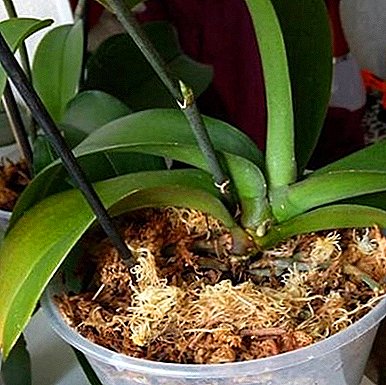 Both insufficient and excessive watering can paint the plant yellow.
Both insufficient and excessive watering can paint the plant yellow.- Direct sunlight on the plant.
- Low air temperature, constant draft.
What to do:
- Adjust the room temperature.
- In order to avoid burns from falling on the leaves of direct sunlight it is necessary to rearrange the flower to another place.
- Adjust the watering mode. This will help monitor the state of the root system (the roots of a healthy plant in a wet substrate have a lush green color, and in dry ground - silver-green) and the substrate. Moreover, it is important to pay attention not only to its upper layer, but also to a more “deep” one. Do not forget about the mandatory presence in the bottom of the pot holes for water flow.
Board: If the plant is planted in a glass container, then the watering process must be completed by draining excess liquid, while holding the ground with your hand.
Does not bloom
Waiting for the orchid to bloom after this procedure, you need to be patient: between the phase of laying new roots and the appearance of the first peduncle may take a long time (usually from 6 to 24 months in some cases - it all depends on the orchid variety and the conditions created by it).
Possible reasons:
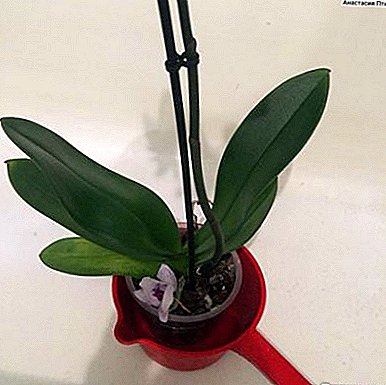 Wrong temperature conditions.
Wrong temperature conditions.- Excess and lack of coverage.
- Excessive watering.
What to do:
- Stimulation of flowering chemicals. The most popular are Epin (daily spraying in the morning or watering once a week with 3–5 drops of the preparation with water) and a solution of succinic acid (2 g per 1 –2 l of water).
- Temperature difference. To release flower stalks, sometimes a plant needs to arrange stress: take it out for the night, for example, to a balcony (+ 18C), and then bring it into a warm room.
- Restriction of watering. Arranging the "drought" is very simple: water the plant 3 - 4 days in a row, and then stop watering for 2 weeks.
- Adjust lighting: the orchid loves a lot of diffused light.
Conclusion
Contrary to many opinions about the capriciousness of an orchid, do not be afraid of its transplant! It is important to comply with all the requirements for this process and to provide the flower with the necessary conditions for recovery in the period after the stress they experienced. And then the miracle flower will delight its owner with a lush bloom for more than one year.


 A flower is placed in a bath and a stream of water at a temperature slightly higher than room water is sent to it.
A flower is placed in a bath and a stream of water at a temperature slightly higher than room water is sent to it. Mechanical damage to the roots during transplantation.
Mechanical damage to the roots during transplantation. Both insufficient and excessive watering can paint the plant yellow.
Both insufficient and excessive watering can paint the plant yellow. Wrong temperature conditions.
Wrong temperature conditions.
